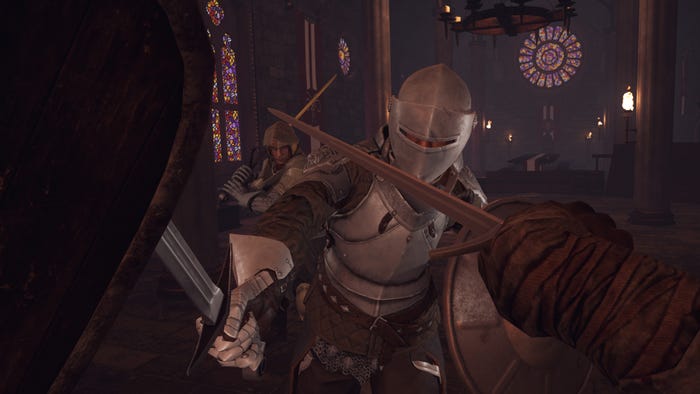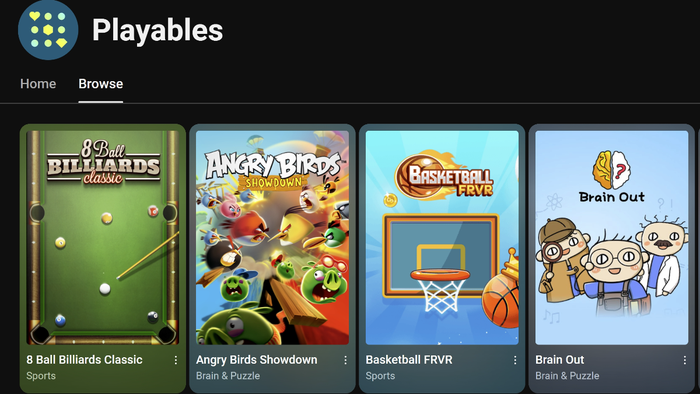
Featured Blog | This community-written post highlights the best of what the game industry has to offer. Read more like it on the Game Developer Blogs.
Narration Avenues in Multiverse Games
Apart from the traditional screenplay and 3d production hurdles, multiverse narratives and games produce even more complex structures of going about the production of ideas and concepts.
May 13, 2024

Apart from the traditional screenplay and 3d production hurdles, multiverse narratives and games produce even more complex structures of going about the production of ideas and concepts.
The most obvious challenges happen during the very early stages of production, i.e. the brainstorming and writing stage. From debating how many characters to have, what personalities to give them, what their character arcs might look like, and what main events will take place to give shape and craft the entire story, directors often end up chucking their semi-formed ideas either because it seems too complicated at first glance, or it doesn’t make sense halfway into creation, or because they don’t have the budget or resources to keep iterating on changes with the same passion.
Right off the bat, ideas tend to start off as too ambitious or too complicated, or often both. Which is a good thing. The struggle begins when three quarters into writing, the ideas seem to get tedious and eventually the script starts to look boring if events don't start to come together.
Timing and attention span of viewers also play a major role in the absorption of the content, leaving directors with multiple checklists to mark off from the traditional filmmaking rules, which, one are difficult to define, and two give them little room for radical experimentation of storylines and story plots.
There are certain obvious mistakes that if avoided during the first quarter of brainstorming could save the team and the production a lot of time and resources, and keep the excitement and momentum for ideation going. Here’s a helpful list to look out for:
The first smart thing to do:
Characters that seem repetitive and have overlapping personalities should probably be merged into singular characters, leaving each player/main character to be distinctive from the other in all the ways that they think, behave, and go about problem solving on their quests. This gives plenty of starting points for writers to come up with unique events that seem organic and can be fun to encounter while playing/watching the game narrative.
The most obvious challenge of multiverse narration:
The infinite tree branching of follow up events. To make a game that could have the possibility to take a variety of routes, directors face the obvious challenge of creating too many pathways to be able to interlink them back to each other where it matters, let alone produce assets for such story branches. To this we say, giving careful choices to their players, is both the challenge and the solution to this problem. The challenge would be to not give the illusion of choice. Instead, give the users definite choice making moments that actually matter and would lead to some fundamental change in the making of the personalities of their player characters. Events that could go different ways but don’t really contribute significantly to character arcs or story plots are the obvious ones to completely overlook.
A hack to go about improving your writing and brainstorming your main events:
First thing to embrace would be your main characters. Studying the way they behave, think, and operate is a big window to defining your main events. Afraid nobody will care about your characters? That can only happen if you’ve got overlapping personalities going, that’s if you haven't studied them enough. If inspired from real life, which most characters are, with enough attention to mapping out their personalities, each character will be unique and have their own - universal story to tell. Main events are a lot like inevitable occurrences that can only play out one typical way based on the developing instincts of your characters, they are usually critical moments of crisis or change.
Say you’ve got the characters, but can’t think of useful main events that come together. A good thing to do would be to put your characters with each other in scenes of different emotions, like fear, excitement, glee. Don’t worry about the order at first. Think about how each one of them would respond to the problem they’re facing, and how they’d affect each other based on their actions. Some would learn from others, some would lead, some would be dismissive, while others may be oblivious. After these various moments, think of quests they could go on with each other, or under what circumstances you’d like them to meet. While drafting these vague moments - keep connecting them, which will then create the path of your overall story fate.
Next, write the same main events from the perspective of your different characters, their understanding of the occurrences, and their outlook and opinions of other characters. No perspective will be a repetition, giving the writer room of experimentation of choices, quests, and lessons learned. The main events stay the same in all of their paths, hence being the crux of your overall story.
There aren’t many books out there to help you systematically craft multiverse plots that can be saturated into a compact reasonable game. Some novel series make attempts at multiplot narratives but unless you’re recreating those specifically, which would be a different kind of challenge in itself, you’d have better luck crafting your own vision that you wish to direct, formate, and give life to, i.e. if you’ve got some big ideas. Needless to state, this stage of writing is meat for your entire production and should be given the most amount of time. To profile your budget and streamline your thinking. It would take intuitive writing, reworking of ideas, and most of all organized planning, which brings me to talk about some obvious and great tools to help you on this journey.
Look and Feel/Art Direction - Start with the staple look and feel of certain scenes you have in mind. Make a google doc, flood it in. But in an organized structure. Collect lots and lots of references, from other movies, scenes, preferably live action, but animation also works wonders. Collect everything you see fit, that matches your vision.
Beat Sheet (Excel sheets) - A classic.
While drafting your multi-plots and developing the different characters, having it all in one place is a god sent - logic gift. Don’t abuse the empty space, keep reiterating, keep it clean, keep color coding your sequences and scenes. The beat sheet acting like a visual map will help you figure out the story challenges and how to bridge the gaps in them.
Storyboarding - Bad at drawing? Work with stick figures. Or don’t draw at all. Storyboarding is a must however, so some alternate heavy lifting will be needed, take screenshots from your visual references. Researching the camera shots you want in your scene, the number of characters, the time of day, the motion of the players. Be sure to include all kinds of details you imagine taking place, from set details to expression details. Although keep in mind to depict moments concisely, to not stretch them unnecessarily, and be mindful of the time they take up. Alternatively, if you’ve got a good collection of references going, you could also edit together an acting reel.
With these basics covered, next define your sets, your quests, and your levels - if it's a game - and even otherwise. And you’ll be all set with a happening multi-branch game.
And finally, we wanted to advocate for using AI tools to help out here and there, but we strongly believe that during brainstorming, you’re better off without AI in your production. We think it slows down the momentum that otherwise has the potential to go smoothly. AI might be useful to find references, but then again the technology is not built for that, and it does more harm than good to our existence, for no needed reason. A whole upcoming blog in itself, stay tuned!
Read more about:
Featured BlogsAbout the Author(s)
You May Also Like









.png?width=300&auto=webp&quality=80&disable=upscale)



